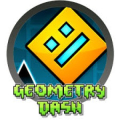
Gorilla Tag review
Gorilla Tag
I remember the first time I slipped on my headset and entered the realm of Gorilla Tag. The anticipation was palpable as I prepared to experience a game that diverged significantly from the conventional VR fare. My heart raced with a mix of excitement and nervous energy because I knew I was about to engage in an activity that not only tested my physical coordination but also pushed my brain to navigate a unique digital landscape. It was as if I had stepped into a world that blended the physical vigor of outdoor play with the uninhibited freedom of a virtual environment. From the moment I was introduced to the vivid jungle setting and inviting, expansive arenas, I felt transported into a realm where anything was possible, and every leap or swing of my arms set the stage for further exploration.
The Physicality of Movement
One of the most striking aspects of Gorilla Tag is its celebration of physical movement. Unlike many VR titles that rely on the click of a button or the tilt of a joystick, this game challenges you to navigate using only your own body. The developers crafted a system where every motion becomes a critical part of the gameplay. I found that the game required a blend of agility and strength; each swing, reach, and jump demanded that I coordinate my upper body movements in ways I hadn’t anticipated before. In a sense, Gorilla Tag brought back memories of childhood play, where climbing trees or chasing after friends in an open field was both strenuous and immensely fun. Every movement contributed to an immersive experience that made me very much aware of my physical presence. I could feel the intensity of the workout, the quick bursts of energy, and the deliberate, careful control necessary during each moment of action.
Understanding the Unique Gameplay
Delving deeper into the mechanics, I realized that Gorilla Tag defies traditional gaming categories. It is simultaneously a platformer, a tag game, and a physical endurance challenge, all wrapped into one. The game’s concept, which centers on using your arms as a means of locomotion, stands out in the crowded field of virtual reality experiences. My approach was both strategic and instinctual; I had to be constantly aware of my surroundings while simultaneouslyplanning my next move. Every area in the virtual world was designed to encourage exploration and ingenuity. The variety in level design—from intricate obstacle courses to open areas that rewarded raw speed—ensured that each session reminded me of the unpredictable nature of real-life parkour. I found myself constantly adapting to new challenges, where the balance between precision and spontaneity was the key to success.
Immersive Virtual Environment
The immersion in Gorilla Tag goes beyond the mechanics of movement; the visual and auditory landscapes play a pivotal role in ensuring a memorable experience. As I navigated through various terrains, I was struck by the vibrant, stylized graphics that managed to capture the essence of a lush adventure. The game environment is not overly photorealistic, which adds to its charm by fostering a sense of playful abstraction. Shadows, ambient sounds, and subtle environmental cues serve as reminders that I was fully present in a world primed for exploration. Whether I was leaping from one platform to another or clambering up virtual trees, every scene was designed with an artistic touch that balanced whimsy and challenge. I appreciated the careful attention given to the details, from the rustle of leaves to the echo of footsteps reverberating in open spaces, all of which contributed to a deep sense of presence and realism.
Social Dynamics in the VR World
One of the pillars of my experience with Gorilla Tag was the social environment it fostered. Interacting with other players was an integral part of the adventure. I had many encounters with players around the globe, each bringing their unique style and flair to the game. The dynamic of chasing and evading created moments of camaraderie, friendly competition, and even spontaneous laughter that spread across the virtual arena. While the game centers on solitary skill development, the social interactions added layers to my gameplay. I recall teaming up with others for impromptu challenges, discussing strategies in real-time, and exchanging tips on how to better navigate tricky sections of the map. In these moments, the conventional barriers of distance and language seemed to dissolve, replaced by a shared passion for exploration and fun. The presence of a vibrant community enriched the experience and nurtured a spirit of cooperation mixed with playful rivalry.
Intuitive Mechanics and Controls
One of the most inviting features of Gorilla Tag is its intuitive control scheme. Right from the outset, I was impressed by how seamlessly the game translated my physical actions into avatar movements in the virtual space. The lack of complicated button commands meant that learning the game was as natural as mimicking the motions of a primate. I had to rely solely on my body’s instinct, which is a refreshing departure from many contemporary VR titles packed with layers of mechanics. The responsiveness of the controls also prompted me to push my limits—velocities and movement angles that I hadn’t considered before. It felt reminiscent of a free-form dance where each motion was both a form of self-expression and a tactical maneuver. The straightforwardness of the system led to a rapid learning curve, and it was clear that the developers invested a great deal of thought into ensuring that every interaction felt both organic and encouraging.
Aesthetic and Sensory Experience
The aesthetic quality of Gorilla Tag is both playful and invigorating. I found the game’s art style to be a refreshing counterpoint to more realistic, hyper-detailed environments seen in other VR titles. The design choices tended to evoke a spirit of adventure and exploration, embracing a sort of cartoonish flair that invites both casual and dedicated play. This aesthetic is further reinforced by a sound design that is light-hearted yet atmospheric. Every ambient noise—from distant echoes to the crunching of virtual foliage beneath my virtual feet—added depth to each experience. I often found that the visual and auditory elements worked in tandem to elevate routine movements into moments of surprising beauty. The color palette, balanced between earthy tones and vivid splashes, created a pleasing visual rhythm that beckoned exploration. In every session, I felt both invigorated by the physicality of my actions and captivated by the sheer artistry of the game’s world.
Technical Underpinnings
Underneath the playful exterior lies a well-crafted technical foundation that supports a fluid and responsive experience. I was aware that such a system requires a significant level of sophistication to handle the real-time simulation of physical movements and collision dynamics in a multi-user environment. The developers have successfully created a game engine that can process rapid sequences of physical input while maintaining stable performance. This stability is crucial for preventing motion-related discomfort and ensuring that the immersive nature of the experience remains intact. I experienced only minimal lag or disruptions, which speaks volumes about the robustness of the underlying technology. Additionally, the game’s continuous updates and community-driven feedback loop have led to a platform that is both cutting edge and highly adaptable. Minor glitches occasionally made an appearance, but they were swiftly addressed, further solidifying my trust in the technical competence behind Gorilla Tag.
Learning Curve and Adaptability
Every challenge in Gorilla Tag came with a learning curve that required me to adjust and adapt. I found the initial phase to be both challenging and immensely rewarding. The game design nudged me towards gradual proficiency by encouraging experimentation with different movement techniques and in-game strategies. There were moments when I struggled to maintain balance or seamlessly transition between moves, yet each of these instances only deepened my engagement with the game. I learned to appreciate the nuances of momentum and spatial awareness as I navigated intricate platforms and unpredictable terrain. The freedom to experiment in a safe digital environment fostered a sense of personalization in my play style. I remember spending long hours perfecting even the smallest maneuvers, which eventually opened up entirely new approaches to navigating the game. This continuous progression of learning, replete with both triumphs and setbacks, kept my interest at a sustained high level and reinforced my commitment to master the game’s intricacies.
Community and Shared Experiences
The communal aspect of Gorilla Tag has greatly enriched my experience. Playing alongside friends and strangers alike allowed me to witness a kaleidoscope of play styles and creative problem-solving approaches. The game naturally fosters social interaction through its dynamic tag and chase gameplay, which translates into lively digital encounters full of energy. I enjoyed spending time in virtual lobbies, discussing strategies and swapping stories about daring maneuvers or unexpected successes. This level of human connection is something that many traditional games overlook. The virtual playground did not just serve as a battleground for competing athleticism, but also as a meeting ground for diverse individuals brought together by a shared passion for interactive play. I felt that each session of Gorilla Tag was an opportunity to learn from others and offer insights into my techniques, thereby cultivating an environment of mutual growth and respect. The human element was everywhere, reinforcing the idea that play is as much about community as it is about personal achievement.
Personal Reflections on the Journey
Reflecting on my journey with Gorilla Tag, I am struck by the transformative nature of the experience. There is something deeply nostalgic and simultaneously innovative about being able to immerse oneself in an environment that demands physical activity, strategic thinking, and adaptability all at once. I came to view the game as a physical and mental workout that not only tested my reflexes but also challenged my capacity to think on my feet. The exhilaration of swinging through a virtual canopy or narrowly avoiding a capture left me with a profound sense of achievement and a desire to push my boundaries further every time I played. The game has a way of drawing out a competitive spirit in you while also fostering a playful and light-hearted mindset. Every session felt like an exploration of my own limits—be it physical stamina, mental agility, or even emotional resilience when confronted with the highs and lows of rapid gameplay.
Moreover, the challenges encountered throughout my journey have often translated into valuable insights applicable to real life. Navigating the virtual obstacles, managing in-game risks, and adapting to sudden changes fostered a degree of mental fortitude that I found beneficial beyond the digital realm. The game taught me to appreciate the beauty of fluid movement and the importance of balance in every aspect of life. I discovered that, much like in Gorilla Tag, overcoming obstacles requires patience, persistence, and a willingness to learn from every misstep. These lessons, though encountered in a digital playground, resonated on many levels. Each session left me with an enriched perspective on collaboration, risk assessment, and the art of staying nimble both physically and mentally.
Ultimately, Gorilla Tag has become more than just a game to me; it is a journey that continuously evolves with every play session. The experience is dynamic, unpredictable, and deeply personal. I have learned to embrace the spontaneity of its challenges, the beauty of its design, and the unspoken camaraderie that pulses through its social interactions. With every leap and friendly chase, I found myself growing more confident in my abilities while also gaining a greater appreciation for the art of movement in an ever-changing virtual world. The memories I have built in this digital jungle are a testament to a game that respects and challenges the body, mind, and spirit in equal measure.
















Leave a comment
Your comment is awaiting moderation. We save your draft here
0 Comments